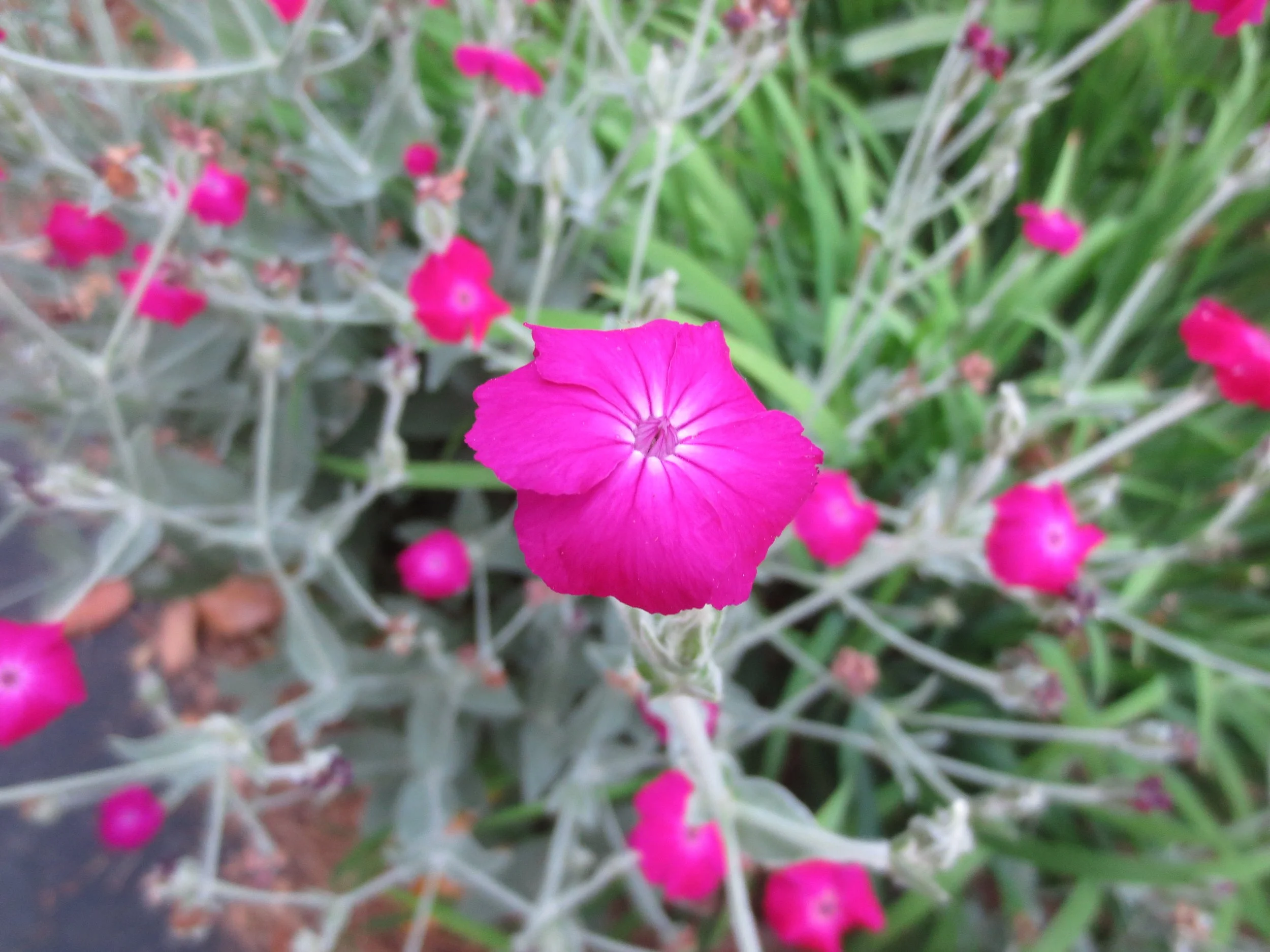A record-breaking heatwave is punishing the southeastern US right now. Yesterday’s heat index in my area was 105 and today is projected to feel like 107. At these temperatures, gardeners and their plants both wilt after 9am. I walked around the garden last evening before sundown, and made note of those annuals and perennials that seemed no worse for their exposure to Nature’s furnace blast.
I am including photos of several of these stalwart survivors in the Snoddy garden. No weeding or deadheading has been done due to the heat.
Here is a list of heat survivors, in no particular order:
Butterfly bush, Buddleia davidii (I grow the dwarf, sterile variety)
Spider flower, Cleome hassleriana (tall, fragrant, attracts evening moths)
Cosmos (easy annual, perfect for a child’s first garden)
Coneflower, Echinacea purpurea (butterfly magnet)
Blanketflower, Gaillardia
Gomphrena, a personal favorite annual
Lantana camara (another butterfly magnet)
Four O’Clocks, Mirabilis jalapa (opens at night, fragrant)
Turk’s Turban, Malvaviscus
Brown-eyed Susans, Rudbeckia triloba
Purple Heart, Tradescantia
Melampodium, another personal favorite annual
Butterfly Weed, Asclepias tuberosa (host plant for Monarch butterfly larva)
Shasta Daisy, Leucanthemum superbum
Goldenrod, Solidago (native, favorite of pollinators)
Wormwood, Artemisia ‘Powis Castle’ (repels deer)
Bee Balm, Monarda (deer resistant)
When you plan for next year’s garden, consult this list and include at least a few to help your flower beds survive heat waves.
Blanket flower (Gaillardia), Zinnia, yellow Melampodium, purple Gomphrena, yellow Goldenrod, dwarf Red Hot Poker
Purple Coneflower, Echinacea
Clockwise: Daylilies, Red Hot Poker, new Puppy, Zinnia, Butterfly Bush, Artemisia, Purple Heart
Butterfly Weed, Asclepias tuberosa
Clockwise from top: Goldenrod, Red Hot Poker ‘Poco Red”, Melampodium, Gomphrena
Brown-eyed Susan, Rudbeckia triloba
Salmon Four O’Clocks, Mirabilis jalapa, next to Incrediball smooth Hydrangea. Forgive the insect damage - I don’t use insecticides on pollinator plants.
Lantana ‘Santana’ looks pretty even when it is not blooming.












